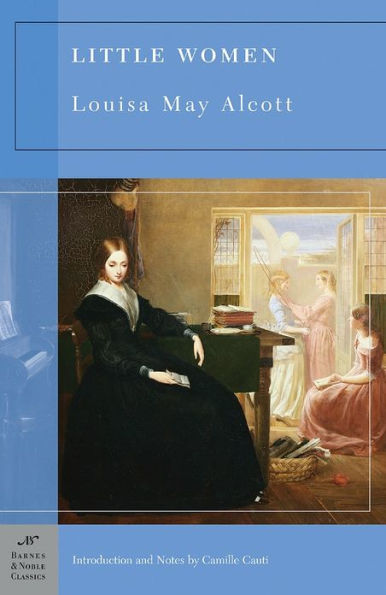Read an Excerpt
From Camille Cautis Introduction to Little Women
All these numbers, statistics, and editions clearly indicate that Little Women has universal appeal. One strong reason is the storys essentially domestic, apolitical nature. After determining that her inclusion of too many controversial ideas about marriage had hurt sales of Moods, Alcott decided to make her girls book idea-free: "My next book shall have no ideas in it, only facts, and the people shall be as ordinary as possible." Most readers would agree that Alcott doesnt necessarily hold to such a strict scheme—she repeatedly reinforces her moral ideas about self-sacrifice and altruism—but overall the novel does place plot considerations above politics, cultural or otherwise. For example, Little Women is set during the Civil War, but Alcott declines to comment on this potentially polarizing topic, even though she had disturbing firsthand experience of its effects as a nurse in Washington, D.C. (she had previously published her wartime observations and opinions in Hospital Sketches, written for adults and published in 1863). Her grueling, gruesome nursing duties left Alcott sickened and exhausted, and she was forced to return home after spending only six weeks tending the injured and dying soldiers. Although Mr. March in Little Women ministers to Union troops, the novel includes very little commentary on his experiences in doing so, or even on the causes or goals of the war. Alcott instead substitutes general praise for the soldiers and demonstrates the supportive sewing and knitting work that women like the Marches performed on the domestic front. Similarly, contemporary controversial reform issues such as the abolition of slavery, which was very close to the Alcott family heart, are also left untouched in the novel. We know that Jo is a great believer in social reform—she allows a mixed-race child to attend her school, and she is vocal about womens rights—but Alcott doesnt give us many details. Jo makes several feminist declarations, but her own family and friends constitute her main audience, and she ultimately ends up living much more conventionally than she previously had forecast. A practical-minded author, Alcott specifically chose not to proselytize for her beliefs lest she risk alienating potential book buyers from different regions of the United States—consumers who, given her royalties arrangement, could provide her living.
The authors strategy of ordinariness worked. An early anonymous review in the Nation (October 22, 1868) quietly praises Little Women as "an agreeable little story, which is not only very well adapted to the readers for whom it is especially intended, but may also be read with pleasure by older people." The reviewer labels the March girls "healthy types, . . . drawn with a certain cleverness" yet complains of the texts lack of "what painters call atmosphere," its over-reliance upon local color, and, strangely, "things and people [in the novel] . . . remaining, under all circumstances, somewhat too persistently themselves." As has often been the case with extremely popular books, this early review did not anticipate its subjects wild success. Another anonymous review, from the December 1868 issue of Arthurs Home Magazine, gives advice that has been followed for generations: "Parents desiring a Christmas book for a girl from ten to sixteen years cannot do better than to purchase this."
Alcott hinted at the end of the first part of Little Women that a sequel might be forthcoming, "depend[ing] upon the reception given to the first act of the domestic drama". She included this teaser even though she would later claim, upon learning that a second installment was in fact demanded of her, that she disliked the very idea of sequels. Part two of Little Women, originally titled Good Wives to portend the girls development as married women, begins with the eldest sister Megs marriage. Upon its release, Little Women, part two, was hailed as extending the March story by "loading the palate without sickishness" (by an anonymous reviewer in Commonwealth, April 24, 1869), although some might have cause to argue such an assessment. A review in the National Anti-Slavery Standard (May 1, 1869) praises the ideal families the book portrays and predicts that life will imitate art: "Thousands of young people will read [Alcotts] story of these healthy, happy homes, and their standard of home and happiness must in many cases be raised." The first part of this prediction has certainly come true; the second, although something to hope for in general, seems a bit much to ask even of this wholesome novel.
The sequel was written to appease Alcotts many fans, who had been begging the author for more information about the March sisters future experiences—namely whom, and how well, they married. Although as a feminist Alcott personally resented the implication that her March girls future happiness depended upon marriage as an end in itself, she did succeed in pairing off most of her characters, although not in the neat ways her romantic readers had desired or even anticipated. Alcotts unusual choices in this regard mystified and disappointed not only many of her contemporary nineteenth-century admirers but generations of girls to follow, who wanted the outspokenly independent, ambitious second sister, Jo, married off according to their own fancy—not to mention future generations of feminist literary critics who bemoaned Alcotts decision to marry her off at all.


